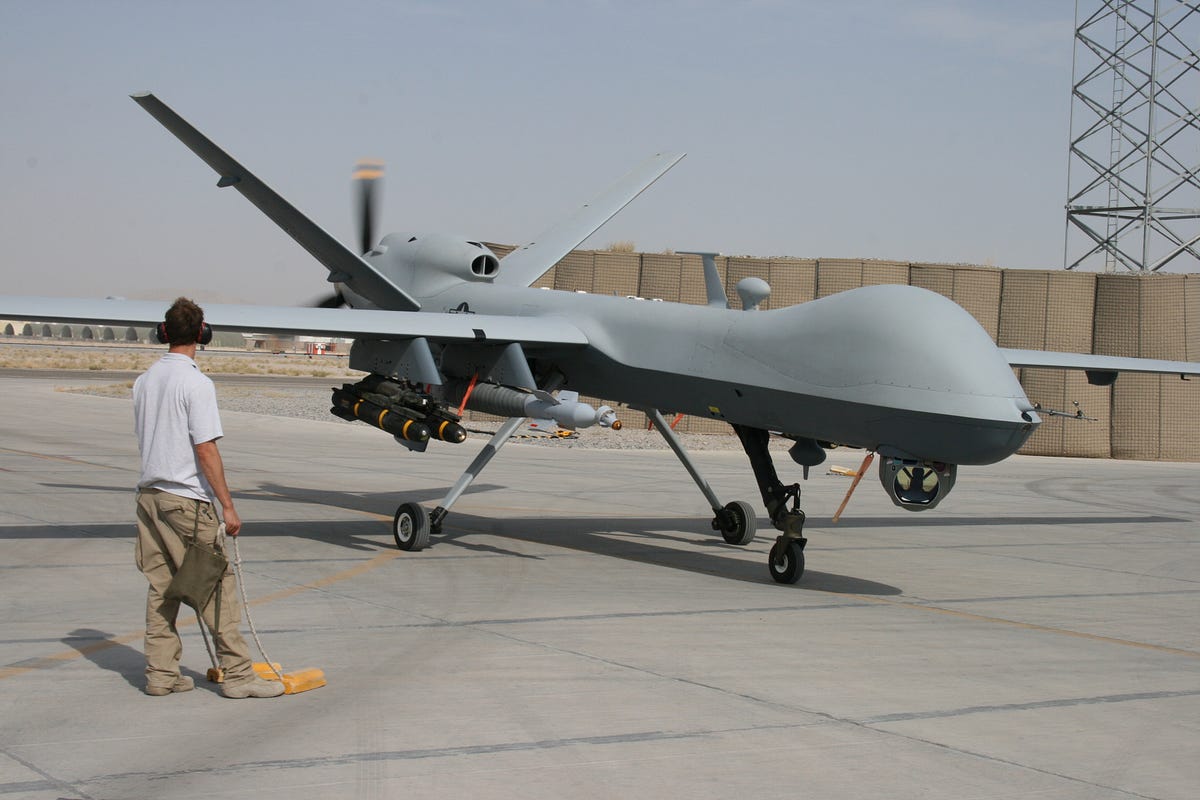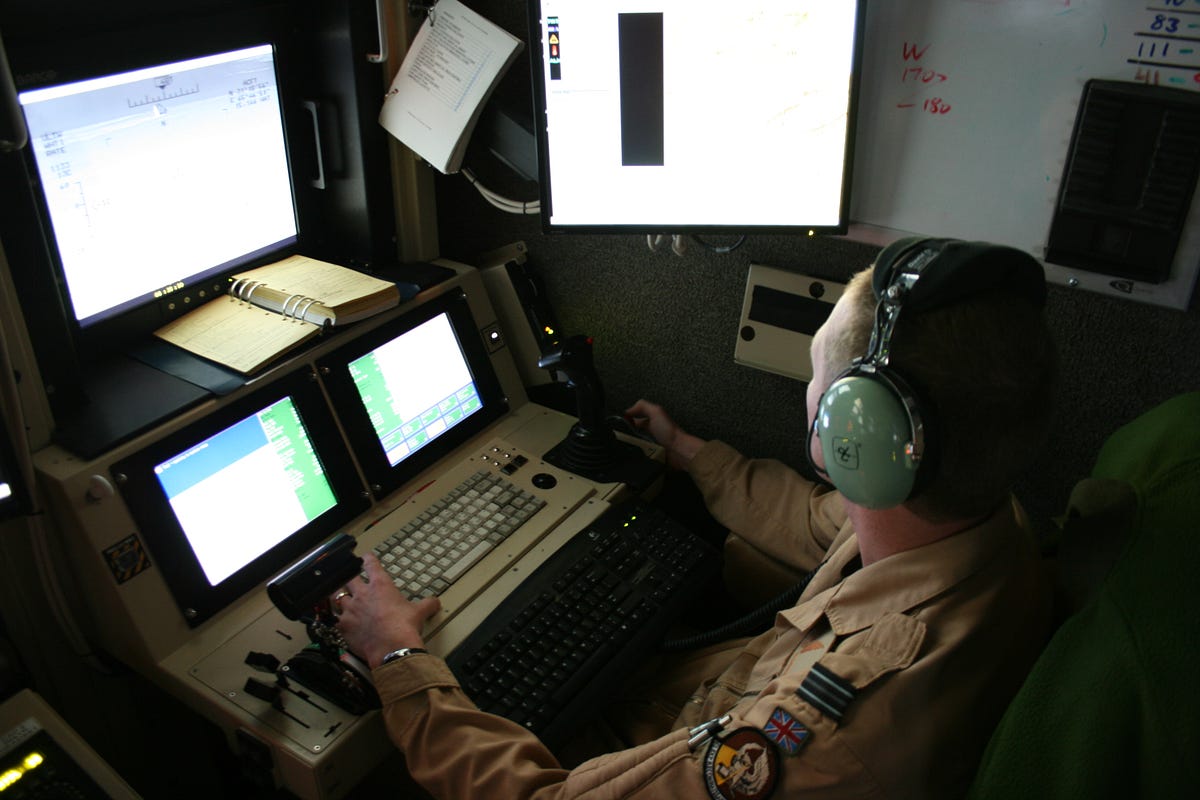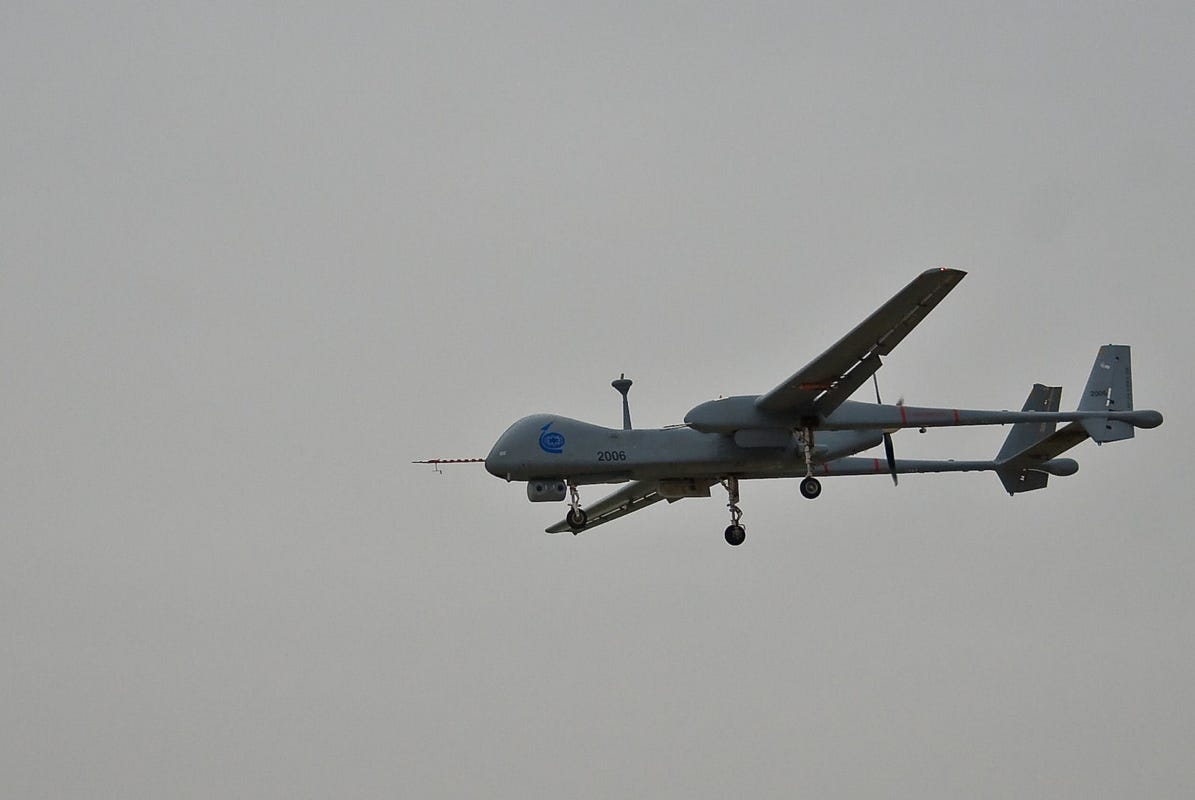Rob Farley in War is Boring
An excerpt from ‘Grounded: The Case for Abolishing the United States Air Force’
The novelty of Unmanned Aerial Vehicles can obscure how well they fit within traditional air power theory. Drones’ capacity for combiningpersistent surveillance with precision-guided munitions makes them useful for air campaigns designed to detach the sinews of enemy military and governmental institutions.
Indeed, if neoclassical air power theory is about leveraging intelligence and surveillance to achieve political and strategic effect, drones are ideal platforms. Drones’ vulnerability to surface and air attack—at least by sophisticated opponent—is ameliorated by their lower material and human costs.
While certain very sophisticated opponents could potentially prevent drones from functioning within part of the battle space—either by making it inhospitable for slow, defenseless aircraft or severing the data link that drones depend on—forcing an enemy to pay the costs of defeating drones is probably, on balance, worth it to many attackers.
In any case, an opponent sophisticated enough to defeat drones can also probably inflict unacceptably high losses on manned aircraft.
My new book Grounded: The Case for Abolishing the United States Air Force has concentrated on the friction between air power theory and a Clausewitzian approach to war.
To recap, air power theorists have long rejected the need for decisive battle against the fielded forces of the enemy. This leaves the decision to terminate war in the hands of a still-armed enemy, which acts for its own reasons.
Second, air power theory puts technology and military theory before politics, disregarding the inevitable political logic of war. The availability of technology and the need for autonomy drive procurement and doctrine, leaving air forces ill-suited for the conflicts they actually face.
Finally, and perhaps most important, air power theory has repeatedly failed to take into account the “fog of war,” Clausewitz’s metaphorical appreciation of the role that complexity and uncertainty play in war.
Aviators argue that modern technology can pierce the fog of war, precisely targeting not just critical enemy industry and communications but also the enemy’s will to fight. This radically understates the complexity of social and organizational systems, leading to wildly optimistic assessments of the utility of force.
How do the drone campaigns of the War on Terror, and the emerging norms and practices of drone warfare, fit into the Clausewitzian frameworks described in my book?v
Disarming the enemy
Drone attacks against Al Qaeda undoubtedly contribute to the degradation of the organization’s capabilities. The assassination of key members of the organization deprives it of human capital, and steps taken to avoid drones—such as limiting communications and limiting gatherings of individuals—inhibit its ability to act.
However, it is unclear how these assassinations fall into a broader strategic framework for victory. Drone strikes have made the United States exceedingly unpopular in Pakistan and in other parts of the world.
This unpopularity has consequently made it much more difficult for the United States to work with partners in the War on Terror, whether in Pakistan, Yemen or Afghanistan. The overall strategic impact of the drone campaign is, therefore, difficult to assess.
Nevertheless, in the terminology described by this book, the drone war appears to have Clausewitzian characteristics in that it represents an effort to win by destroying the military capability of the enemy organization.
Technological novelty
There is good reason to believe that the novelty of drones, a mostly new kind of warfare, is sufficiently impressive to civilians that they overstate the degree to which the method meets strategic needs. Drones give governments a simple military solution to complex political and military problems.
In the case of the War on Terror in particular, they allow the U.S. government to forgo the difficulties associated with either capturing and prosecuting members of Al Qaeda or physically occupying the space in which Al Qaeda operates.
Like many air power campaigns, the drone war has arguably escaped the bounds its initiators imagined, but while mission creep is common to air campaigns, it is not solely a feature of air power.
Indeed, the Air Force as an institution does not appear to bear any guilt in this situation. The USAF’s standoffish relationship with drones—not particularly hostile, nor altogether friendly—does not resemble its older relationship with the manned bomber, for example.
Indeed, in the War on Terror the drone-led strategic bombing campaign against Al Qaeda has largely been executed by entities other than the air force, with only marginal air force participation. And so while the drone war surely involves some degree of technological fetishism, the problem cannot, in this case, be laid at the feet of the USAF.
An Air Force officer launches a Scan Eagle drone in Afghanistan. David Axe photo
Fog of war
One of the key attractions of drones is their ability to clear away some of the fog of war. The loiter capability allows drones to study targets for a longer period, leaving analysts with more information for drawing conclusions about the position of a target within the enemy organizational framework. Indeed, the assassination of Qaed Salim Sinan Al Harethi is a textbook example of how intelligence can be used to identify and destroy key network members.
The overwhelming majority of drones perform specifically this duty, whether at tactical, operational, or strategic levels. Consequently, drones represent attempt to lift the fog of war off of both the battlefield and the social milieu that armed forces are intended to protect.
However, implementation indicates that imperfections remain. Estimates of the death toll of drone attacks in Pakistan vary dramatically, including differences on the legal status of targets and civilians.
Indeed, “signature strikes” are defined by imperfect intelligence; targets are identified by their suspicious patterns of behavior rather than by intelligence indicating specific culpability in terrorist or militant activity.
More important, evaluation of the impact of drone warfare on the militant networks that it targets is inherently difficult. While U.S. intelligence agencies have some tools for evaluating the strength of militant networks, these metrics remain hazy and difficult to test.
Moreover, it may be beyond the capacity of the state to evaluate whether members of the Chechen diaspora are more likely to launch attacks against the United States because of their concern about Pakistani villagers living under the threat of drone strikes.
Debate over drone warfare remains fraught with misperception and misunderstanding. The emerging opposition to the use of drones by the United States is unfocused, with many arguments blurring the lines between the technology itself and broader critiques of American foreign and military policy.
The difference between killing someone with a drone and killing the same person with an F-16 surely means little to the person killed.
However, critics are correct to identify troubling trends in drone usage. If drones allow policymakers to believe that wars—or even anti-terrorist campaigns—can be won cheaply and easily, they may lead to more such conflicts.
Perhaps more worrisome, the trend toward automation in military drone technology is fraught with deeply troubling questions about human control of machines and the responsibility of individuals for crimes against humanity.
Our drone future
The future of drone warfare depends, to some extent, on decisions made within the Air Force and in the U.S. Department of Defense more broadly. But the genie is undoubtedly out of the bottle.
Many countries have undertaken the development of advanced drones, similar to the ones employed by the United States. While no other nation has embarked on a drone campaign similar to that of the United States, we can guess that drones will eventually prove as useful to foreign leaders as they have to the U.S. government.
Thus, while the answer to the question that animates my book—namely, how shall we structure America’s air power?—affects the future of drone technology, it will not determine that future.
Indeed, perhaps the most fascinating part of the story of the Rise of the Drone, so to speak, is how little the story depends on the U.S. Air Force. The USAF fostered early drones because it had free money with which to do so, but it never saw drones as central to its future.
The bulk of American drones operate outside of air force control. Most surprising, the United States is conducting a strategic bombing campaign that involves the air force only at the margin.
While in the view of my book, these developments exclude the Air Force from a great deal of the blame associated with the drone wars, they also suggest that the USAF is no more than a minor player in what is thus far the most important question of 21st-century air power theory.
The practice of drone employment is compatible with the body of 20th-century air power theory. But drones undoubtedly lack the romanticism associated with manned flight, and there is no question that this romanticism still cuts to the heart of air force identity.
Obviously, given its commitment to the F-35 and to the Long Range Strike Bomber, the Air Force remains interested in manned aviation—although the LRS may have unmanned capabilities.
Discussions of organizational culture and bureaucratic position tend to render debates over the future of the air force dull and dry, but we cannot forget that one of the great appeals of air power remains the sheer joy of flight.
As drones, abetted by bureaucracy and economics, slowly take missions away from manned aircraft, this romanticism may fade, and much air power advocacy may fade with it.
Grounded: The Case for Abolishing the United States Air Force is available for per-order. Sign up for a daily War is Boring email update here. Subscribe to WIB’s RSS feed here and follow the main page here.




No comments:
Post a Comment